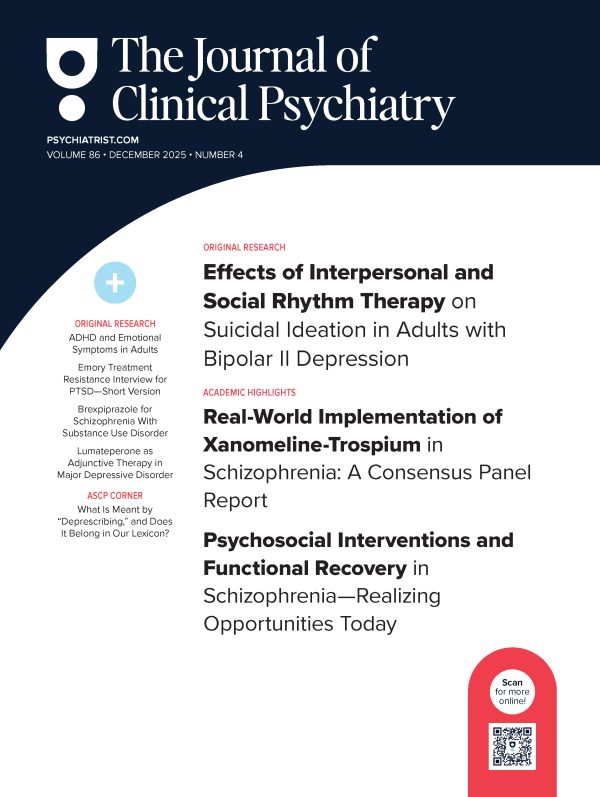Background: A subset of patients with comorbid major depressive disorder and generalized anxiety disorder (GAD) was examined from a double-blind, placebo-controlled study comparing the efficacy and safety of venlafaxine extended release (XR) and fluoxetine.
Method: From a total of 368 patients, 92 patients meeting DSM-IV criteria for major depressive disorder who also had comorbid GAD were identified. The comparison group comprised 276 evaluable noncomorbid patients. Patients received venlafaxineXR (75-225 mg/day), fluoxetine (20-60 mg/day), or placebo for 12weeks. Efficacy evaluations included Hamilton Rating Scale for Depression (HAM-D), Hamilton Rating Scale for Anxiety (HAM-A), and Clinical Global Impressions (CGI) scale.
Results: By the final assessment at week 12, comorbid patients in the venlafaxine XR group, but not in the fluoxetine group, showed a significantly greater decrease than those in the placebo group in the primary efficacy variables of mean HAM-D and HAM-A total scores (p = 50% decrease in symptoms score, was achieved in 66% and 59% of the comorbid patients for HAM-D and HAM-A, respectively, in the venlafaxine XR group at week 12. This response was higher than that seen with fluoxetine (52% and 45%) or placebo (36% and 24%). Onset of efficacy appeared to be slower in comorbid than in noncomorbid patients.
Conclusion: This is the first evidence from a controlled study of the effectiveness of pharmacotherapy in patients with comorbid major depressive disorder and GAD. The delayed improvement in comorbid patients compared with noncomorbid patients suggests that a longer treatment period may be necessary in comorbid patients.
Please sign in or purchase this PDF for $40.00.


